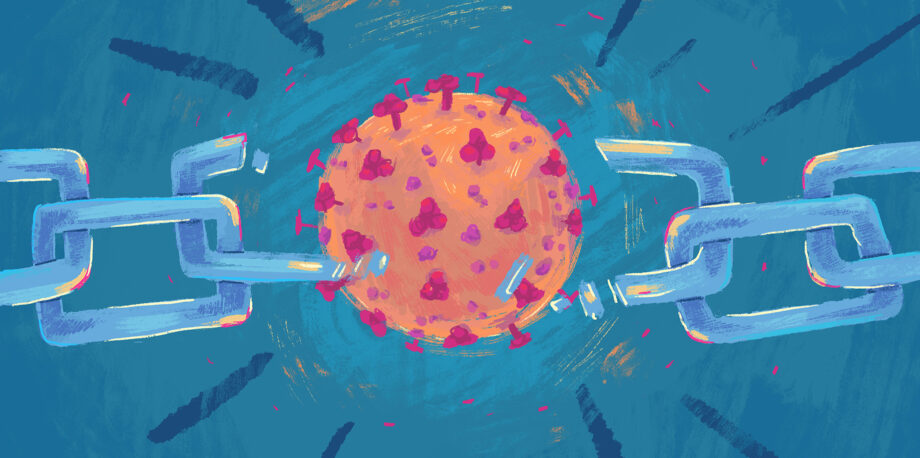July 23, 2020 — Adapted with permission from GreenBiz
It turns out our economic systems are more fragile than we thought.
As locations across the world implemented “shelter-in-place” orders in an effort to flatten the coronavirus contagion curve last spring, we got a real-time lesson in how intertwined our transportation and distribution systems are. It was staggering to see how efforts to curb the human toll of a pandemic rippled across every sector and created incalculable emotional and social impacts.
As we work to future-proof our economy, this pandemic may give rise to the power and value of local sourcing.
The Lesson of Supply Chains
While I knew vaguely how globally interconnected our economy was, I didn’t really think about it until parts started to break down. It took everything falling apart for me to understand how it fits together.
By early March nearly 75 percent of U.S. companies had seen supply chain disruptions, and an analysis of supply chains showed that the world’s largest 1,000 companies or their suppliers had more than 12,000 facilities in quarantined areas of China, Italy and South Korea.
In a world where the only consumer-facing metric is the price of a good, it makes sense how this would happen. Companies look for the lowest price to source inputs and prioritize low costs over diversification. Efforts to drive down the cost of goods put all of our supply eggs in one quarantined basket.
If you live in California and experienced planned power shutoffs last fall, this may sound familiar. Our aging grid and prolonged power outages had a multi-billion-dollar economic impact on the region, much of which would have been avoidable if utilities and regulators had properly analyzed the risk of wildfires.
While the specifics are different, the lesson is similar: When we rely on centralized supply and fragile distribution systems, we’re vulnerable to disruptions that may result in economic impacts not properly accounted for in the cost of supplies.
Local = Resilient
It’s hard to put a value on resilience until you need it.
Companies reliant on single sourcing for upstream supplies are likely regretting having not better analyzed the potential for disruption. It reflects a failure of risk management principles, according to the Harvard Business Review, showing businesses failed to monitor supply chains and understand potential disruptions.
Likewise, companies and municipalities are working to understand the cost of microgrids and back-up power supplies as California looks down the barrel of the next fire season. People smarter than me have asserted that when we look at the cost of resilience holistically, we can’t afford not to act. Yet deferred action is attractive. The upfront costs are right, and it requires no political or regulatory will.
The unprecedented response to coronavirus, however, may provide the best argument for local resilience we’ve had. For the first time, I felt connected to communities everywhere by the same common threat and solution. Perhaps there’s never been a better (or more bleak) argument for local resilience than the coronavirus.
Decarbonization Benefits
Supply chain disruptions also highlight the global sourcing for components that comprise consumer goods. As a friend once whimsically put it: If a string were to connect all items and materials in your house to their places of origin, the world would be covered in string.
At a time when we are increasingly considering the embedded carbon within our products, the corona-disruption brought to light the massive amount of transportation-related emissions that are invisible. It may be economically cheap to transport items across the globe, but it’s costly in greenhouse gas emissions.
“When Covid-19 comes around, disrupting that flow of goods around the world, we are faced with a reckoning that the ‘cheap’ goods may not be so cheap after all,” said Noah Goldstein, director of energy, sustainability and infrastructure at Guidehouse, in an email. “If there are no parts to put together, not being able to sell a product makes it infinitely expensive.”
In other words, the same strategies that keep a company’s operations financially resilient could make it more climate-friendly.
“Coronavirus is forcing us to look into supply chains, and it will be a good time to use that reflection as an opportunity,” Goldstein said. “An opportunity to look at local supply chains. An opportunity to evaluate the resilience in the supply chain. An opportunity to look at the embedded carbon in the supply chain.”
Editor’s note: The views expressed here are those of the author and not necessarily of Ensia. We present them to further discussion around important topics. We encourage you to respond with a comment below, following our commenting guidelines, which can be found on this page. In addition, you might consider submitting a Voices piece of your own. See Ensia’s Contact page for submission guidelines.
Related Posts
Ensia shares solutions-focused stories free of charge through our online magazine and partner media. That means audiences around the world have ready access to stories that can — and do — help them shape a better future. If you value our work, please show your support today.
Yes, I'll support Ensia!





This explains further https://voxeu.org/content/covid-19-and-trade-policy-why-turning-inward-won-t-work.